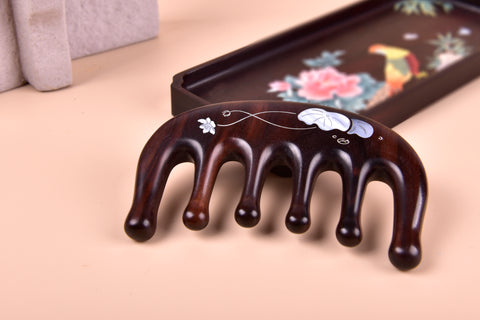Choosing the Right Comb for Your Hair: Deciphering Between Wide-Tooth Combs and Regular Hair Combs
Selecting the appropriate comb for your hair is a crucial step in maintaining its health, manageability, and overall appearance. With a plethora of options available, understanding the differences between wide-tooth combs and regular combs is essential for making an informed decision. This comprehensive guide explores the factors to consider when choosing between wide-tooth combs and regular combs, providing insights into their benefits, suitability for various hair types, and practical tips for optimal hair care.
The Essence of Wide Tooth Combs:
Wide tooth combs are characterized by their widely spaced teeth, designed to navigate through knots and tangles with ease. Unlike regular combs with closely spaced teeth, wide tooth combs minimize pulling and friction, making them ideal for curly, thick, or textured hair types. They work harmoniously with the natural pattern of the hair, allowing for gentle detangling and styling without causing stress or damage to the strands.
Wooden Wide Tooth Combs: A Natural Approach to Hair Care:
Wooden wide tooth combs represent a natural and eco-friendly alternative to combs made from plastic or metal. Crafted from sustainable wood sources, these combs offer several advantages beyond their functionality. Wooden combs are gentle on the hair and scalp, reduce static electricity, and provide a soothing massage effect during use. They are also biodegradable and contribute to environmental sustainability, making them a preferred choice for those seeking eco-conscious hair care solutions.
Differences Between Wide Tooth Combs and Normal Combs:
- Tooth Spacing: The most noticeable difference between wide tooth combs and normal combs is the spacing between the teeth. Wide tooth combs have wider gaps between teeth, allowing for easier detangling and reduced hair breakage.
- Hair Type Suitability: Wide tooth combsare best suited for curly, thick, or textured hair, as they can navigate through knots and tangles without causing damage. Normal combs, with their closely spaced teeth, are more suitable for straight or fine hair types.
- Styling Versatility: Wide tooth combs excel in distributing conditioner or styling products evenly through the hair, promoting hydration and reducing frizz. Normal combs are often used for precise styling, parting hair, or creating sleek finishes.
- Scalp Stimulation: Wide tooth combs, including wooden variants, can provide a gentle scalp massage that promotes blood circulation and healthy hair growth. This scalp stimulation is less pronounced with normal combs due to their closer tooth arrangement.
- Environmental Impact: Wooden wide tooth combs offer an environmentally friendly choice compared to plastic or metal combs, contributing to sustainable hair care practices and reducing plastic waste.
Choosing the right comb for your hair involves considering several factors to ensure optimal results and minimize damage. Here are some guidelines for deciding between a wide-tooth comb and a regular comb:
- Hair Type: Wide-Tooth Comb: Ideal for curly, thick, or textured hair as it gently detangles without causing breakage. It helps maintain curl definition and minimizes hair loss.
- Regular Comb: Suitable for straight or fine hair as it provides precision styling, smoothing effects, and scalp stimulation.
- Detangling Needs: Wide-Tooth Comb: If you struggle with knots, tangles, or hair breakage, opt for a wide-tooth comb for gentle detangling, especially when your hair is wet.
- Regular Comb: Use a regular comb for fine hair that needs precise styling and smoothing, particularly for creating sleek looks or intricate hairstyles.
- Styling Preferences: Consider your daily styling preferences and the type of looks you frequently create. If you prefer natural curls and volume, a wide-tooth comb is more suitable. For sleek, polished styles, a regular comb provides better control and definition.
- Hair Care Routine: Incorporate the comb that complements your hair care routine. For example, use a wide-tooth comb to distribute conditioner evenly or apply hair masks. Use a regular comb for styling after blow-drying or straightening.
Both wide-tooth combs and regular combs can be valuable additions to your hair care routine, offering versatility, functionality, and gentle care for your hair. Experiment with different combing techniques, styles, and products to discover what works best for your hair type and preferences.

Wide tooth combs, including wooden variants, offer a gentle and effective approach to hair care, particularly for curly, thick, or textured hair types. Understanding the differences between wide tooth combs and normal combs helps individuals make informed choices based on their hair type, styling preferences, and environmental considerations. Whether opting for a traditional wide tooth comb or embracing the natural benefits of a wooden wide tooth comb, incorporating the right tool into your hair care routine can enhance the health, appearance, and manageability of your hair while promoting sustainability.









